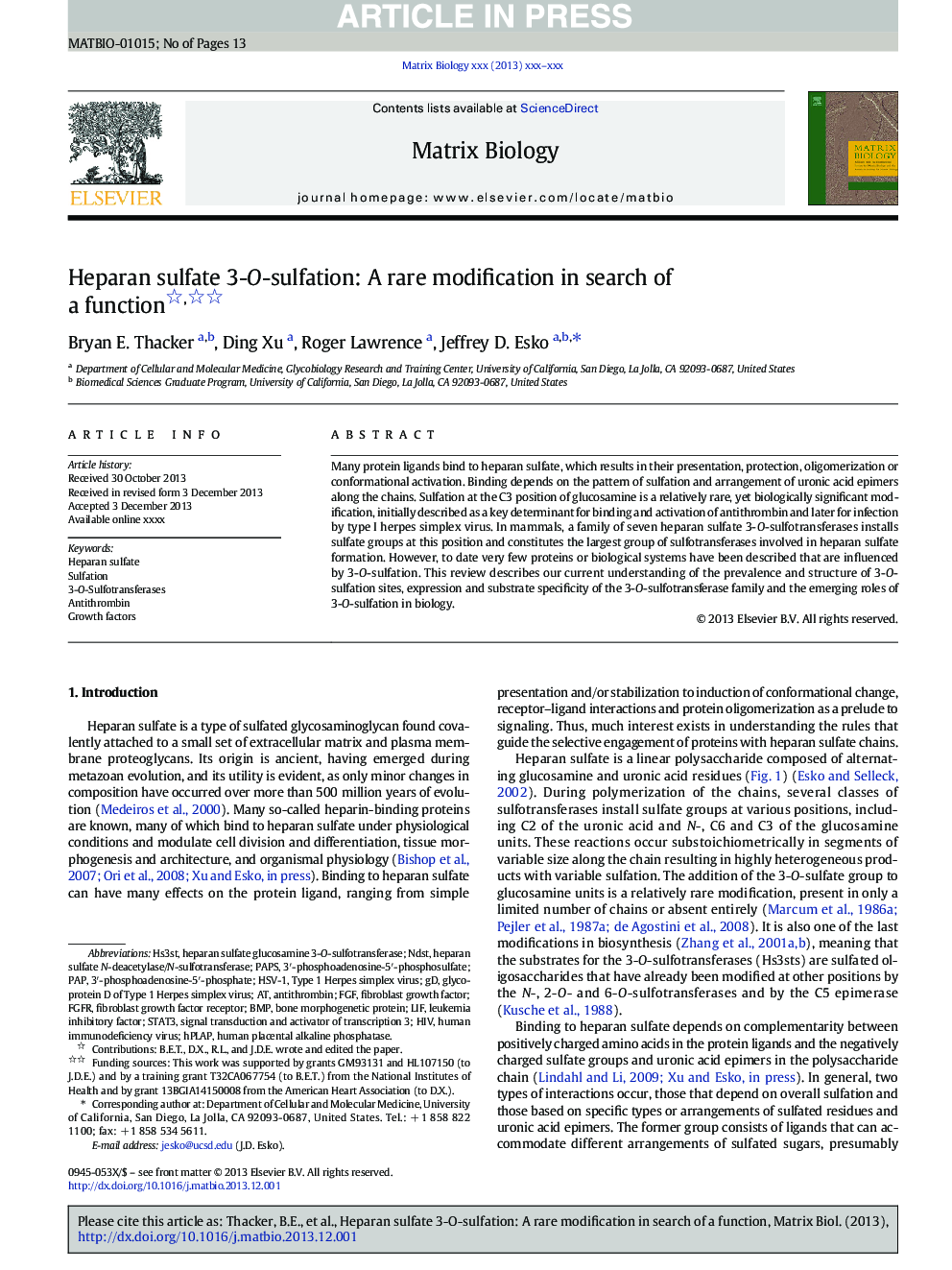| Article ID | Journal | Published Year | Pages | File Type |
|---|---|---|---|---|
| 8455328 | Matrix Biology | 2014 | 13 Pages |
Abstract
Many protein ligands bind to heparan sulfate, which results in their presentation, protection, oligomerization or conformational activation. Binding depends on the pattern of sulfation and arrangement of uronic acid epimers along the chains. Sulfation at the C3 position of glucosamine is a relatively rare, yet biologically significant modification, initially described as a key determinant for binding and activation of antithrombin and later for infection by type I herpes simplex virus. In mammals, a family of seven heparan sulfate 3-O-sulfotransferases installs sulfate groups at this position and constitutes the largest group of sulfotransferases involved in heparan sulfate formation. However, to date very few proteins or biological systems have been described that are influenced by 3-O-sulfation. This review describes our current understanding of the prevalence and structure of 3-O-sulfation sites, expression and substrate specificity of the 3-O-sulfotransferase family and the emerging roles of 3-O-sulfation in biology.
Keywords
Related Topics
Life Sciences
Biochemistry, Genetics and Molecular Biology
Cancer Research
Authors
Bryan E. Thacker, Ding Xu, Roger Lawrence, Jeffrey D. Esko,
